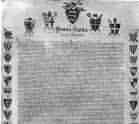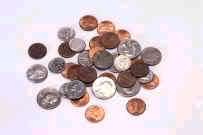Primary and secondary sources form the cornerstones of historical research. A modern-day work of history is is essentially a description and interpretation of primary sources, along with commentary of secondary sources, both using them in reference to the subject matter at hand, and agreeing and disagreeing with them. This vague definition is universally applicable to all branches of history, from Roman economics to Mayan archeology. Primary and secondary sources are crucial to verifiable historical research.
But do you know the difference between primary and secondary sources? Below are a few exercises with examples of each. They include physical documents, works of art, examples of material culture, and even historical figures themselves.
So, what are primary and secondary sources? In effect, a primary source is direct source of historical information dating from the period in question. A book from 1877 England would be a primary source about Victorian history. Eyeglasses from Colonial America would be a primary source about Early American History. An inscription on a sixteenth-century tombstone in Istanbul would be a primary source from the Classical Ottoman Age. Secondary sources are interpretations of history. Think of them as history books, although this is a bit misleading, as secondary sources can include articles, movies, audio recordings, or any other source of media that interprets history. Edward Gibbon’s “A History and Decline and Fall of the Roman Empire” is a secondary source because it interprets facts of the past; it is not from the period in question. The book was written in the late eighteenth century, putting it well outside the end of the Roman Empire and making it a secondary source.
“Richard Burton: The Victorian Explorer Who Discovered the Kama Sutra, Made a Secret Pilgrimage to Mecca, and Knew 29 Languages”
For the full “History Unplugged” podcast, click here!
Look at each of the images below and guess which are primary and secondary sources.
Primary and secondary sources: A piece of the original Magna Carta signed by King John in 1215

The Mona Lisa – Painted by Leonardo da Vinci in 1506

A book about the Tudors written in 1999

A mug made in 2018

A cartoon of Napoleon made in 1975

Roman Coins made by the Romans in AD45

A Poster of a Van Gogh Painting made in 1975

Cite This Article
"Primary and Secondary Sources: How Should They Be Used?" History on the Net© 2000-2024, Salem Media.
April 18, 2024 <https://www.historyonthenet.com/primary-and-secondary-sources>
More Citation Information.





